



































EAA Auditorium Rand Airport and Brian Stableford - The General
By Willie Bodenstein (Assisted by Karl Jensen and Juri Keyter

The EAA Auditorium used to be the Squash Court of the Transvaal Aviation Club (TAC) that had stood forlorn and dilapidated until 2003 when the EAA's Jeremy Wood gained access to the building and saw its potential as a venue for Chapter 322. Arrangements were made with airport management. Jeremy and Chris Van Hoof, a registered architect, led the project to convert the building internally to an auditorium with seating in tiers for 70-80.
The Auditorium early on Thursday evening
Discarded airliner seats were donated and all the tier construction was carried out by EAA members under the supervision of Chris van Hoof. Sennheiser donated a PA system and various members donated items of furniture. The 1st EAA Flying Legends Talk Show was held in 2005, compered by Karl Jensen and for the next 10-12 years, these shows were held on a monthly basis. Others included Mike Brown on a regular basis and one by Gordon Dyne and two by Scully Levin.
The Aircraft seats before the arrival of the guests
The squash court side room, which is now the refreshment area, used to house the emergency power generator for Rand Airport. The generator was sold to help finance the transformation into an auditorium. The TAC building, now the Beer Company Pub and Restaurant, as well as the exhibition area of the SAA Museum, I am told, used to be the SAAF 4 Squadron headquarters, mess etc.
Shooting the breeze, waiting for the show to start
Ronéll Myburgh, “The Ticket Lady” and EAA Secretary
The Braai Masters; Ronnie, Pottie and Coen
Shooting the breeze, waiting for the show to start
Pilot's Post correspondent Russell Dixon-Paver tucking into a juicy burger with EAA Chapter 322 Chairman and organizer of the annual tours to Oshkosh and this year also Sun 'n Fun in Florida, Niel Bowden with daughter Laura and wife Caroline.
Over the years, the auditorium has hosted many South African aviation legends. On Thursday evening 23 January 2020, is was the turn of a humble officer and gentleman, Brian Stableford, better known as 'The General'.
Brian Trevor Stableford
Juri Keyter a number of years ago in an article published in Pilot's Post wrote the following about Brian: “Waiting for some action with my camera next to the runway at Krugersdorp some time ago, I saw a beautiful Stampe biplane taxying out not long after it was shipped to South Africa and reassembled here. The cross-wind was pumping and although I am an amateur taildragger pilot with less than 500 hours, I had enough experience to know that these conditions were not ideal for these types of aircraft and it will truly require an exceptional pilot to fly it now. I therefore assumed that this will simply be some high-speed taxi tests and watched him for his first run. Halfway down the runway I was sure that something was wrong and that it accidentally took off. I moved to the threshold to get some photographs as I knew that there would only be one landing and one opportunity to get some landing photographs. The Stampe side slipped to the left on short finals, gently touched down and to my amazement, took power and flew again. This was obviously not your average pilot……”
Full house
Captain Karl Jensen and Brian in a jovial mood during the interview
Brian in a pensive mood during the interview
Born in 1943 it was a given that Brian would eventually fly. Shortly after starting high school at Pretoria Boys High, Brian's father, who was instrumental in the SAAF's purchase of the legendary Shackleton's, accepted a position in the Rhodesian Air Force. That opened the door for Brian and in 1962 he joined the Royal Air Force (RAF) as cadet commencing his training at the Cranwell College.

Cranwell
Brian, 2nd last right in the backrow and his class mates in Cranwell in 1962
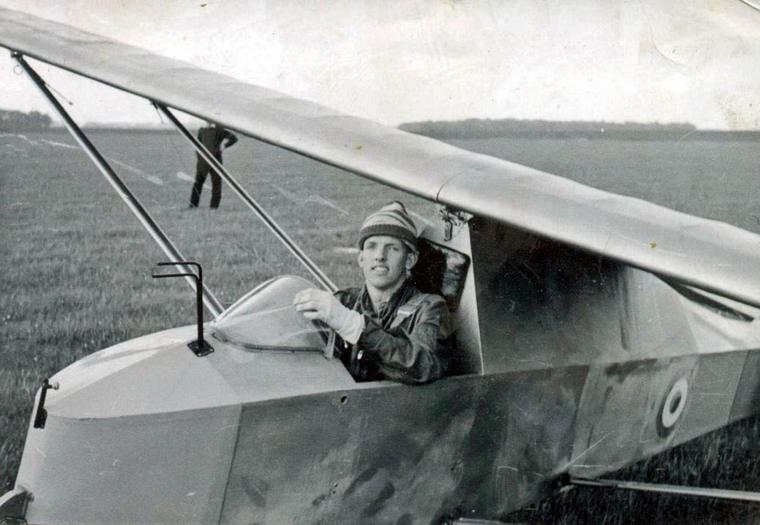
Glider flying during basic training at Cranwell
Brian in a group photo in front of a Jet Provost in which he, after doing basic in the Chipmunk, he did his jet training

The class during their Wings Parade. Brian and the Battle of Britain” aerobatics trophy inspired by Alan Deere, one of the RAF's leading aces during World War II that was awarded to Brian.
Getting his wings
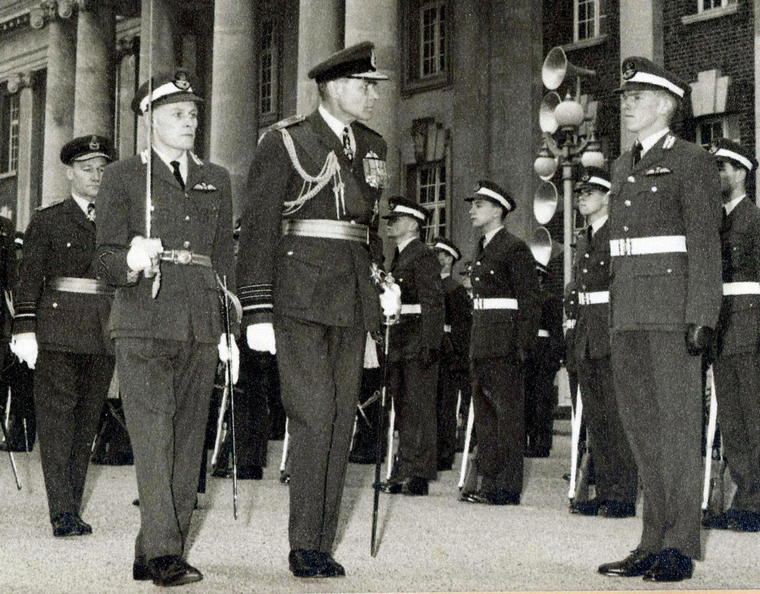
Wings Parade
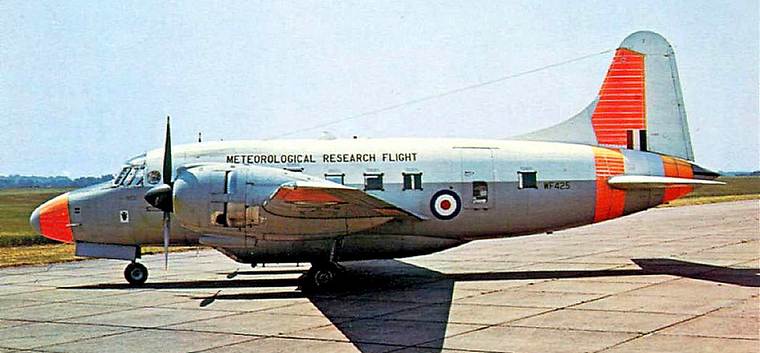
Multi-engine training on the Vickers Varsity

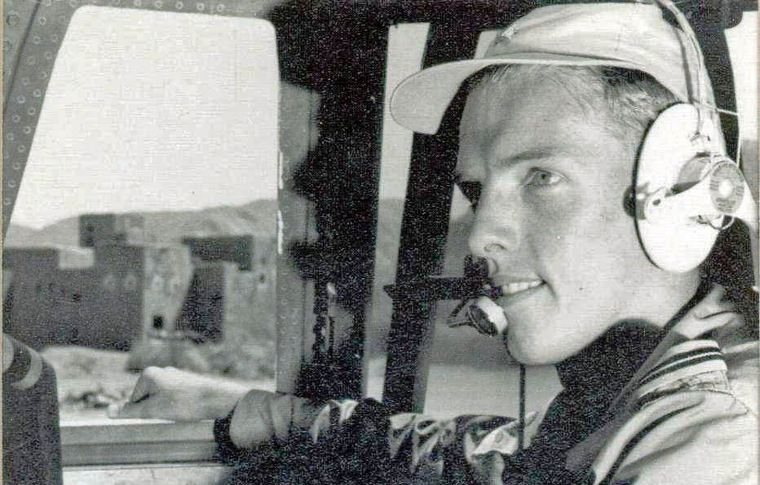

A young Brian flying operations in the Middle East
His Middle East tour over, he returned to the UK. Little that he knew then that he would return to Aden 40 years later in a DC4. Flying continued and he did stints in Malta, Gibraltar and Cyprus and flew extensively in Europe. When he had to choose between giving up his Rhodesian passport due to the declaration of UDI in that country and accept British citizenship and then continue with a career in the RAF, he refused. Told that he would then have to resign, he discussed it with his OC who advised that he should rather retire which he did the following year, on 1 April.

Brian in some of the more unusual aircraft that he had flown whilst back in South Africa
Retired at 26 and with a British com license, Brian returned to South Africa and applied to SAA, who he heard was hiring. He passed all the tests, but when inquiring when he could start, was told sometime in the following year. He tried his hand at crop spraying but really did not like it and bought an old motorbike and rode it all the way up north to Rhodesia. Soon afterwards, out of the blue, he got a call from SAA to say that he should report for duty in September. Brian's career with SAA was as a Boy Pilot (an inflight relief pilot) on the 707 and one year later on the 747. Although Brian had a distinguished career in the SAA from this point on serving as a co-pilot, captain and training captain on the Hawker Sidley, Boeing 727, Boeing 737, Boeing 747, Airbus A300 and others, it is his experience and stories flying the JU-52 (Tante Ju), DC-3, DC-4, DC-6 that capture the fascination of us all.
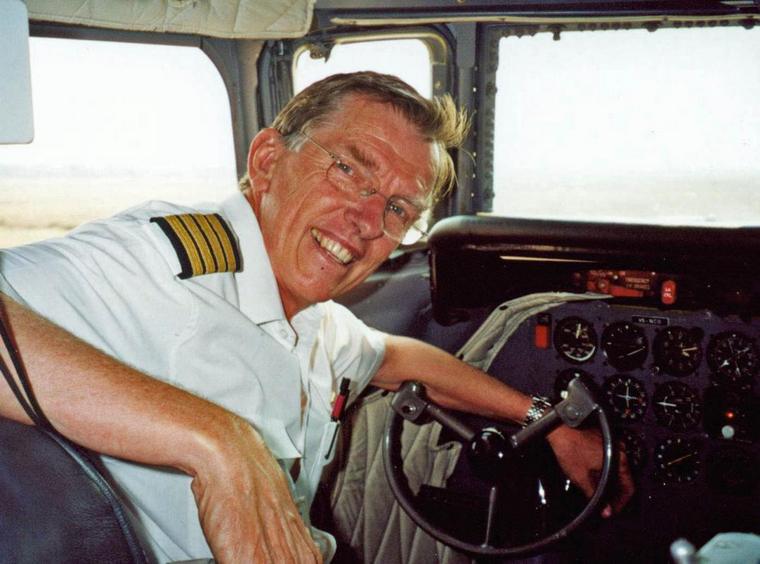

Junkers JU-52 (Tante Ju)

In 2002, with more than 24000 flying hours, Brian retired from SAA. His last flight was in the 747 painted in SA's Olympic colour scheme. He remembers landing in New York and the ATC saying “Nice paint job Springbok! Did you do it yourself?” That might have been the end of his second career but it actually was the start of another, or rather quite a few others.

Swissair to the USA via Gander

Delivering two ex SAAF Harvards with Scully Levin to Stu Davidson in Port Elizabeth
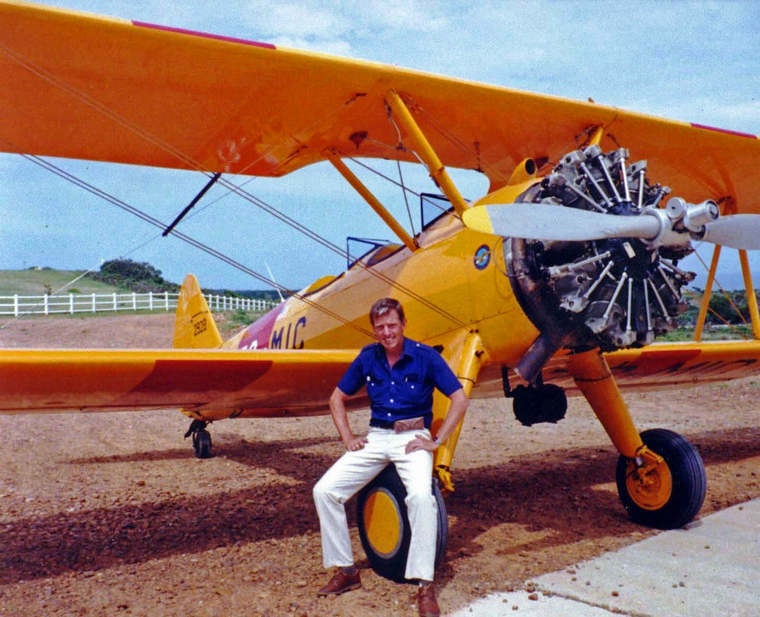
With Lorrie Raath's Stearman

In Derek Hopkins's Teeny Two, “Little Mo”

The third scale Spitfire, a real night mare to fly according to Brian

Right hand seat in the Catalina
With an excess of 24000 flying hours, Brian retired from SAA in 2002 but is still actively involved in aviation providing guidance and of course, having fun by flying with friends he made over this long but fascinating aviation career. His all-time favourite aircraft remains the Boeing 747 followed by the DC-6. He has many riveting stories about flying these aircraft which we hope to capture someday for the generations to come.
In Ricardo de Bonis's WagAero and Super Cub
I am honoured to have known Brian and to have had him as the pilot of the subject of many an air to air shoot. Brian is a real professional and he made my work so easy. Brian has now finally decided to call it a day, or so he says. I somehow think he is only starting on his third career. I don't know what it is but will put money on it that it will have something to do with flying.
 |
 |
 Copyright © 2024 Pilot's Post PTY Ltd
The information, views and opinions by the authors contributing to Pilot’s Post are not necessarily those of the editor or other writers at Pilot’s Post.
Copyright © 2024 Pilot's Post PTY Ltd
The information, views and opinions by the authors contributing to Pilot’s Post are not necessarily those of the editor or other writers at Pilot’s Post.